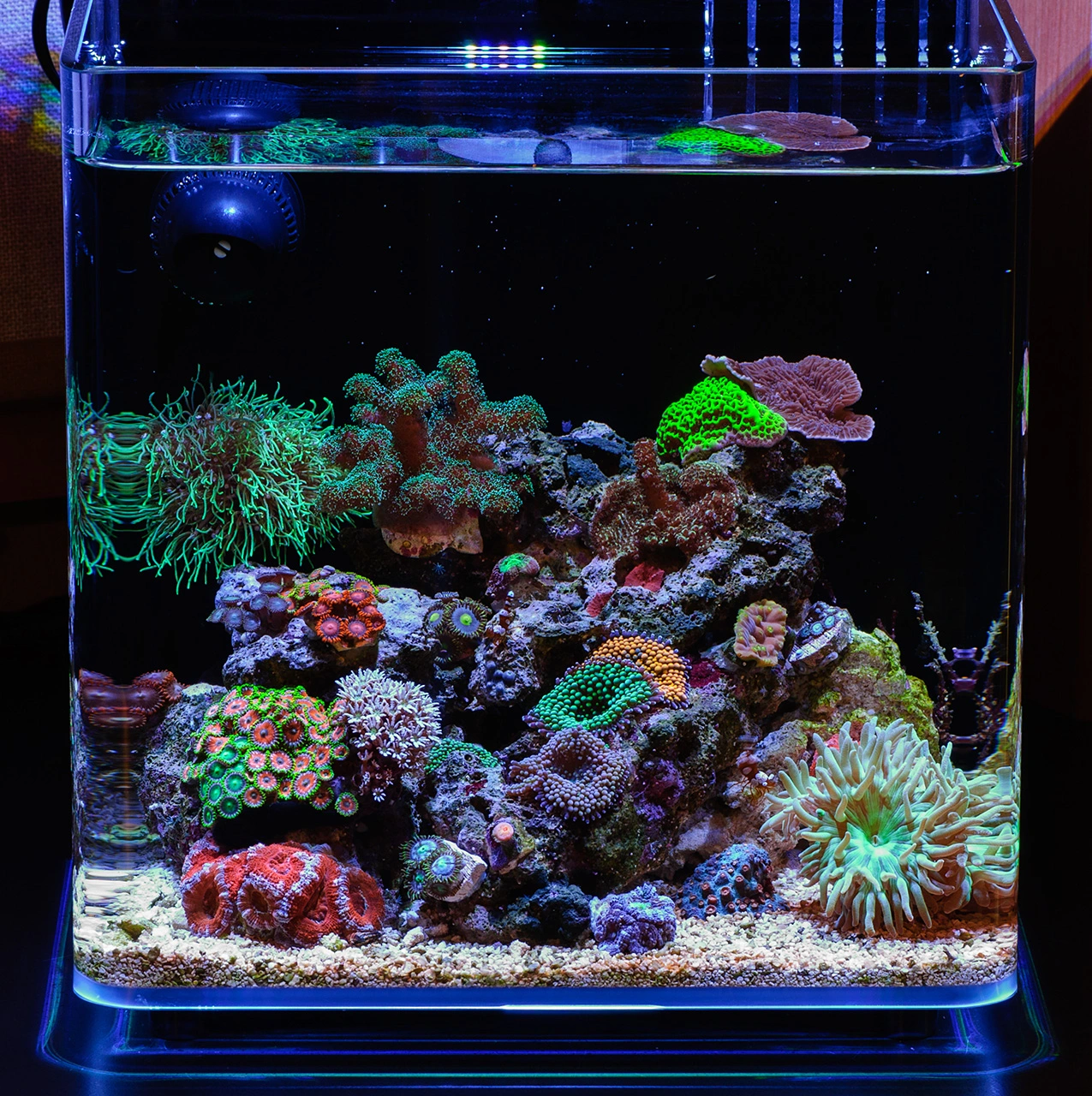Stunning 4-Gallon Reef Tank – teenyreef's TOTM | NanoReef

Tank Specifications
Volume: 4 Gallons / 15 Liters
Dimensions (L × W × H):
12.0" ×
12.0" ×
12.0"
30.5cm ×
30.5cm ×
30.5cm
Equipment List
No equipment information available
Frequently Asked Questions
How often should I perform water changes in a pico reef tank?
In a pico reef tank, it is recommended to perform a 30% water change weekly. This helps to maintain water quality and removes excess nutrients that could lead to algae growth.
What is the quick way to clean a pico reef tank?
Cleaning a pico reef tank can be done efficiently. A 30% water change takes about 30 seconds using a couple of large cups to remove water, while algae scraping only takes about a minute. Stirring the sand and blowing off the rocks with a turkey baster is also part of the routine.
How can I clean the back chambers of my pico tank?
Cleaning the back chambers of your pico tank should be done every 2-3 months. Remove any buildup of salt creep and perform necessary cleaning of all filters and compartments to ensure optimal function.
What are the ideal water parameters for a healthy reef tank?
For a healthy pico reef tank, the ideal parameters are: Salinity at 1.025, Temperature around 79°F, Alkalinity at 8.5 dKH, Calcium at 420 ppm, and Magnesium around 1300 ppm.
How often should I test water parameters in my pico reef tank?
It's advisable to test salinity, temperature, and alkalinity daily, while calcium and magnesium should be tested weekly to monitor the health of your reef tank.
What is the routine for nutrient export in a pico reef tank?
For daily nutrient export, blow off rocks and stir the sand with a turkey baster. Weekly, perform a 30% water change, clean the glass, and replace filter floss. Monthly tasks include replacing carbon and GFO, cleaning the skimmer, and replacing the air stone.
How should I handle excess nutrients in a reef tank?
To manage excess nutrients effectively, it is crucial to maintain a regular cleaning and water change schedule. Also, ensure that you are not overfeeding your corals and fish.
How should I dose supplements in a pico reef?
In a pico reef tank, dosing should be done twice a day using a doser, such as the Jebao doser. Recommended supplements include Seachem Fusion Part I & II for general nutrient requirements, along with Aqua Vitro Ions and Two Little Fishies AcroPower weekly for magnesium and coral feeding.
What feeding schedule should I follow for corals and fish in a pico reef?
Feed your fish daily, targeting with about 10 Ocean Nutrition Formula One Pellets. For corals and invertebrates, feed every other day using a combination of foods like ReefRoids, LRS Reef Frenzy, or PE Mysis shrimp.
What should I do if I notice algae outbreaks in my reef tank?
To reduce algae outbreaks, ensure you are maintaining good water quality with regular water changes and proper nutrient export. Reducing feed amounts can also help prevent nutrient spikes that lead to algae growth.
How can I address zoa pox if it occurs in my tank?
If you notice zoa pox, you should isolate the affected colonies if possible, and treat the area with a coral dip specifically designed to combat pests or diseases, following the manufacturer's instructions.